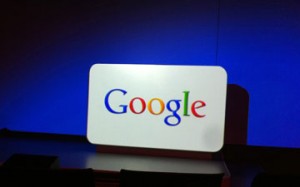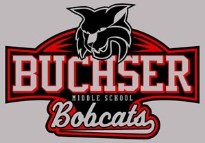Personalized learning means that learning is centered around the students. The students drive their learning around their passion, something they are interested in. Teachers guide the process. Sounds easy but it is a big shift in thinking for educators. Maybe the process can slowly evolve by transforming your classroom by using 20% of the time for passion-driven learning.
Sir Ken Robinson said in an interview for the Vancouver Sun last week, “It isn’t that everyone has to learn different things, although eventually our interests will take us in different directions,” he continued. “But in terms of the things we want all people to learn … personalized learning is finding the best ways to engage with people with different interests, passions and ways of thinking. It’s what good teachers have always known, he added. “That their job is not to teach subjects, but to teach students.”
20% Time at Google
 One concept Google is where employees work 80% of their time on Google projects and the other 20% of their time they can devote to any project they want. Google found this to be very successful both in employee satisfaction, but also their workers have come up with projects that have made a difference in peoples lives! They can use the time to develop something new, or if they see something that’s broken, they can use the time to fix it. During the 20 percent time, engineers developed features in the labs and other very popular tools. Google teachers realized the idea of using 20% of your time on something your passionate about seemed like a good idea for schools.
One concept Google is where employees work 80% of their time on Google projects and the other 20% of their time they can devote to any project they want. Google found this to be very successful both in employee satisfaction, but also their workers have come up with projects that have made a difference in peoples lives! They can use the time to develop something new, or if they see something that’s broken, they can use the time to fix it. During the 20 percent time, engineers developed features in the labs and other very popular tools. Google teachers realized the idea of using 20% of your time on something your passionate about seemed like a good idea for schools.
Projects of Interest
 Brian Van Dyck (vandyck.brian@gmail) from Buchser Middle School in Santa Clara, California implemented 20% time in both his 6th grade Math class and 7th Grade Technology classes. Brian fashioned the 20% guidelines much in the same manner they are implemented at Google. Students choose their own projects of interest based on the scope of the course outline. For instance, in Math 6, students can pursue any project directly related to the content standards of the course. One Math 6 student chose the construction of 3 dimensional models of geometrical shapes to explore the connection with ratio and scale. This student went one step further and explored computer based interactive models that allowed for the manipulation of size, volume, surface area etc…. As a result there is a fabulous collection of wooden 3D geometrical shapes for use in Brian’s own instruction. In his technology courses, students explored self paced independent learning of some introductory computer programming languages. These “Self Taught” projects included ALICE, SCRATCH, BYOB, Processing (to control robotics), Android App Inventor, and JES (Python). As it is related to the course standards, these students took it upon themselves to learn these tools and create some fantastic projects.
Brian Van Dyck (vandyck.brian@gmail) from Buchser Middle School in Santa Clara, California implemented 20% time in both his 6th grade Math class and 7th Grade Technology classes. Brian fashioned the 20% guidelines much in the same manner they are implemented at Google. Students choose their own projects of interest based on the scope of the course outline. For instance, in Math 6, students can pursue any project directly related to the content standards of the course. One Math 6 student chose the construction of 3 dimensional models of geometrical shapes to explore the connection with ratio and scale. This student went one step further and explored computer based interactive models that allowed for the manipulation of size, volume, surface area etc…. As a result there is a fabulous collection of wooden 3D geometrical shapes for use in Brian’s own instruction. In his technology courses, students explored self paced independent learning of some introductory computer programming languages. These “Self Taught” projects included ALICE, SCRATCH, BYOB, Processing (to control robotics), Android App Inventor, and JES (Python). As it is related to the course standards, these students took it upon themselves to learn these tools and create some fantastic projects.
To help manage the 20% time project work, students follow a course syllabus outlining the required learning activities/projects and course standards. This syllabus acts as a checklist of sorts. Students check in with Brian during guided practice and independent student work time to show him artifacts and evidence that they are on track for the completion of their required tasks. Any student that has successfully demonstrated that they are on track to complete these requirements may use guided practice and independent student work time to pursue their 20% projects.
At most Google sites they have something called “Beer and Demos” where Googlers share their completed and often uncompleted work over beers during their presentations. Brian has a “Rootbeer and Demos” day scheduled every 2 weeks for students to showcase their 20% project progress.
Break Through Time
Gemma Rennie (gemma@stonefields.school.nz) and Georgie Hamilton (georgie@stonefields.school.nz) from Learning Hub 2 at Stonefields School, Auckland, New Zealand (http://www.stonefields.school.nz/) have their 20% time as Breakthrough time. This is where all the children from Yr 1-8 choose what interests them and organise their learning time for one day a week. is a learning organization that designs learning to cause learning for each learner. Stonefield develops each learner holistically to create curious individuals who relate well to others. The four rocks in the Stonefield’s logo represent the four elements of the learner.

Breakthrough time encourages students to pursue their passion. Here’s an example of Savannah performing a concert for the other students. She learned how to play the guitar, organize a concert, and promoted the concert herself. http://stonefieldsrocks.blogspot.com/2011/07/savannah-performing-rockin-robin.html
Savannah’s Concert from Stonefields School on Vimeo.
This is just the beginning of my posts on 20% time. I used to do iSearches with students in the early 1990s. I talked to teachers in Orinda USD who did Magic Boxes where students chose a topic to study once a week. I believe we are going to see more focus on student-centered learning and personalizing learning. This is one aspect that is very interesting and could be adopted by teachers even if they are concerned about keeping test scores up. Motivation and engagement really matter.




Thank you for blogging about this important concept. Also I am honored to have my classroom highlighted as one of your examples of the implementation of 20% time in a classroom environment. As a result of your blog post I have already received several request from teachers across the country to have me share with them and help them establish a 20% learning component in their own classrooms. I’m honored to help. I will keep you updated with stories of my students 20% work this school year.
I love this post. Definitely a new bookmark for me. Often I think that not enogh time is given to really pursue interests. Twenty percent is such a significant amount of time. Please write more on this topic!
Wonderful!
Thank you Vicky! Will do. I’m hoping to find schools that are doing this and share how it is working. I’d love to talk to students and share their perspective.